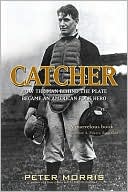Category Books
- Fiction Books & Literature
- Graphic Novels
- Horror
- Mystery & Crime
- Poetry
- Romance Books
- Science Fiction & Fantasy
- Thrillers
- Westerns
- Ages 0-2
- Ages 3-5
- Ages 6-8
- Ages 9-12
- Teens
- Children's Books
- African Americans
- Antiques & Collectibles
- Art, Architecture & Photography
- Bibles & Bible Studies
- Biography
- Business Books
- Christianity
- Computer Books & Technology Books
- Cookbooks, Food & Wine
- Crafts & Hobbies Books
- Education & Teaching
- Engineering
- Entertainment
- Foreign Languages
- Game Books
- Gay & Lesbian
- Health Books, Diet & Fitness Books
- History
- Home & Garden
- Humor Books
- Judaism & Judaica
- Law
- Medical Books
- New Age & Spirituality
- Nonfiction
- Parenting & Family
- Pets
- Philosophy
- Political Books & Current Events Books
- Psychology & Psychotherapy
- Reference
- Religion Books
- Science & Nature
- Self Improvement
- Sex & Relationships
- Social Sciences
- Sports & Adventure
- Study Guides & Test Prep
- Travel
- True Crime
- Weddings
- Women's Studies
Catcher: How the Man Behind the Plate Became an American Folk Hero »

Authors: Peter Morris
ISBN-13: 9781566638708, ISBN-10: 1566638704
Format: Paperback
Publisher: Dee, Ivan R. Publisher
Date Published: October 2010
Edition: (Non-applicable)
Author Biography: Peter Morris
Book Synopsis
Today's baseball catcher stolidly goes about his duty without attracting much attention. But it wasn't always that way, as Peter Morris shows in this lively and original study. In baseball's early days, catchers stood a safe distance back of the batter without protective gear. Then the introduction of the curveball in the 1870s led them to move up directly behind home plate, even though they still wore no gloves or other protection. Extraordinary courage became the catcher's most notable requirement, but the new positioning also demanded that the catcher have lightning-fast reflexes, great hands, and a throwing arm with the power of a cannon. With so great a range of required skills, a special mystique came to surround the position, and it began to seem that a good catcher could single-handedly make the difference between a winning and losing team.
Publishers Weekly
Morris (But Didn't We Have Fun?) offers a thorough look at the evolution of the catcher from the 1870s-when the position "became the ultimate example of the American ideal of the rugged individualist"-to the early 1900s. Indeed, the position was not for the timid. Early catchers dealt with pitches and foul tips without the benefit of today's fancy protection, just a pair of gnarled hands and tons of grit. However, as baseball's rules changed and equipment such as chest protectors and mitts became part of the catcher's uniform, public opinion plummeted. Additional changes in the game saw the catcher valued again in the early 20th century, this time for his intelligence as he "didn't need to endure pain to become a hero." Morris's superlative research and keen observation never leads to dry or academic writing. He has produced a fascinating merger of social and baseball history, taking an almost irrelevant subject and filling it with color-thanks to the generous use of old newspaper accounts-and stirring profiles of long-forgotten players who were daring, deranged or both. (Apr.)
Copyright © Reed Business Information, a division of Reed Elsevier Inc. All rights reserved.Table of Contents
Acknowledgments ix
Introduction: A Generation in Search of a Hero 3
1 In the Beginning 27
2 The Catcher as Tough Guy 35
3 The Catcher as Indispensable 59
4 The Catcher as One in a Million 69
5 The Catcher as the Man in Disguise 87
6 The Breaking Point 105
7 Protecting the Catcher's Face (But Bruising His Ego) 114
8 "A Lot of Fools in the Crowd Laugh at Him" 135
9 The Thinking-Man Catcher 158
10 The Catcher as Desperado 172
11 Harry Decker, the "Don Juan of Shaven Head" 189
12 The 1890s: "An Era When Most of the Catchers Were Pot-Bellied and Couldn't Get Out of Their Own Way" 208
13 "The Last of the Old Guard of Ball Players" 229
14 A New Pitch and a New Crisis 237
15 An Enduring New Model 249
16 The Catcher's Legacy 278
Afterword: The Man the Hall of Fame Forgot 285
Appendices 291
Notes 295
Selected Bibliography 363
Index 371
Subjects
 Sports & Adventure
Sports & Adventure  Baseball Player & Coaches - Biography
Baseball Player & Coaches - BiographyBiography
 All Biography
All Biography  Sports & Adventure Biography
Sports & Adventure BiographySports & Adventure
 Baseball & Softball
Baseball & Softball  Baseball Players - Pitchers & Catchers
Baseball Players - Pitchers & CatchersSports & Adventure
 Sports & Adventure Biography
Sports & Adventure Biography  Baseball Player & Coaches - Biography
Baseball Player & Coaches - BiographyNonfiction
 Biography
Biography  Sports & Adventure
Sports & AdventureNonfiction
 Biography
Biography  All Biography
All Biography
